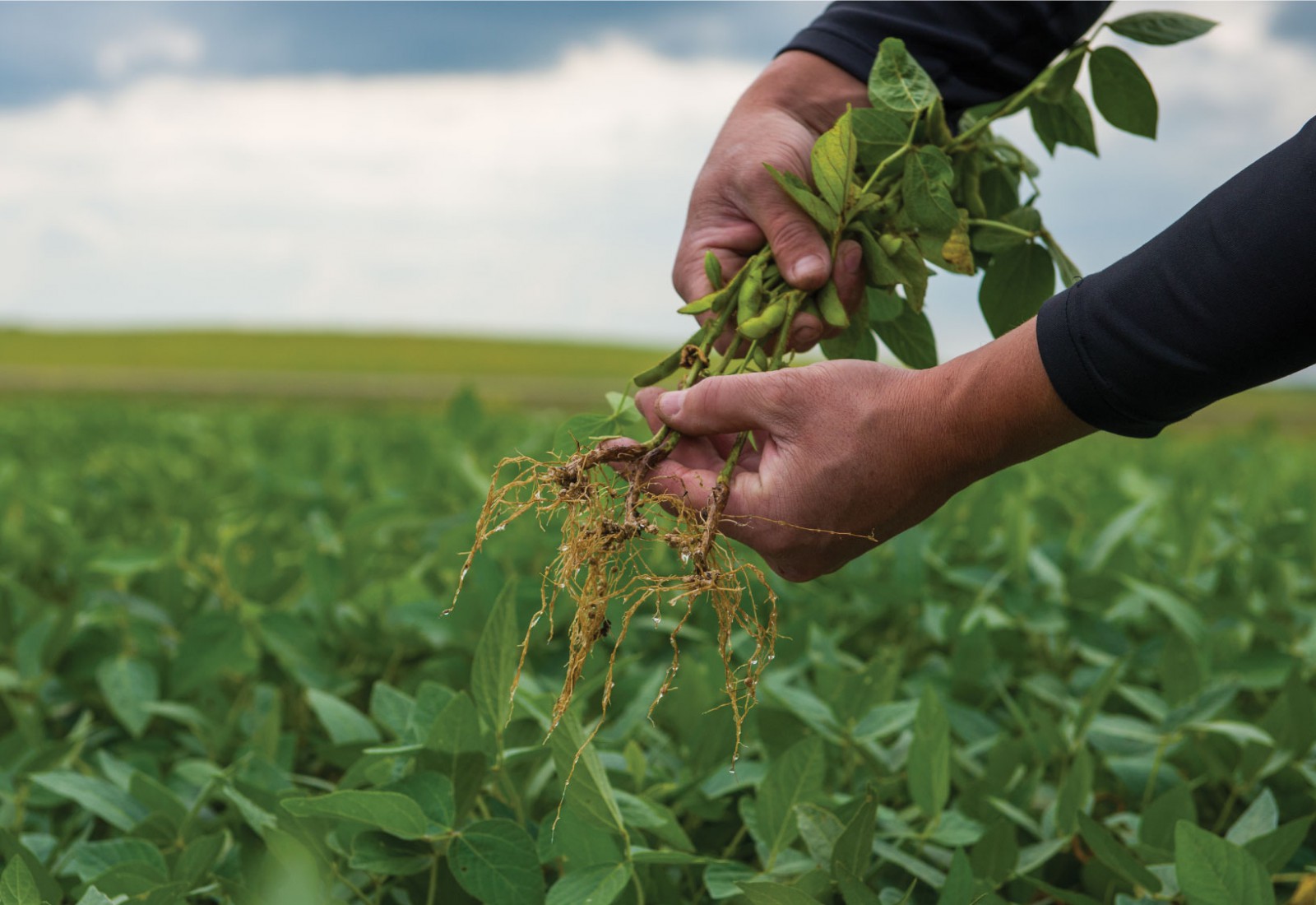More Nitrogen Anyone? What’s New In Nodulation?

By Geoff Geddes
Nitrogen for soybeans is like chocolate for a sweet tooth: remove it at your peril. While certain nutrients fall into the “nice to have but not required” category, nitrogen is essential to soybean survival. And when it comes to optimizing nitrogen and protecting your crops, the best approach is a combination of nature and nurture.
Supplying the demand
“Soybeans have a high demand for nitrogen,” says Ariel Gohlke, brand manager for inoculants – Canada with BASF.
“Approximately 5 lbs. of nitrogen are required to produce a bushel of soybeans. Fortunately for soybean producers, most of this nitrogen is provided through biological fixation of atmospheric nitrogen by bacteria living in colonies (nodules) on the soybean roots.”
The process is known as nodulation and is a prime example of nature taking its course. It’s also a critical process for soybeans and those who grow them.
“Biologically, nodulation is the second most important reaction for plants after photosynthesis as it gives the plant access to what is essentially a free pool of nitrogen, which just happens to be the most important nutrient for soybeans,” says Jon Treloar, a technical agronomist with Monsanto BioAg. Since Mother Nature does her part to keep soybeans nourished with nitrogen, growers need to do theirs.
Apply within
“To ensure nodulation, growers should use an inoculant on the seed and an in-furrow application,” says Gohlke. This is especially true in Western Canada where weather events such as very cold or wet springs may affect the inoculant applied on the seed. With the application of the second dose in furrow, growers gain added assurance of proper nodulation.
Deciding to perform the applications is the first step; just as important, though, is deciding what to apply.
“For the past two years, BASF has been promoting the use of Nodulator PRO, which contains the most effective and active Bradirhizobium japonicum on the market,” says Gohlke.
The Bradirhizobium japonicum produces the nodules and with that, fixes nitrogen from the atmosphere.
Given the potential damage to yield in the absence of proper nodulation, Gohlke takes it one step further.
“Soybean growers should be considering the additional benefits that a second biological, such as the one in Integral – Bacillus amyloliquefaciens – can bring to the crop. This second biological is the only biofungicide on the market for soybeans and suppresses important seed diseases. On top of this disease suppression, it also increases growth above and below ground, boosting water and nutrient uptake as well as increasing nodulation and, in the process, nitrogen fixation.”

Jump to it
Since farming is a daily battle, producers should consider all weapons at their disposal to aid in nodulation.
“There are other biologically active components that we can add to the production system,” says Treloar.
One of those is the LCO (lipochitooligosaccharide) molecule. While its chemical name would stress a spelling bee champion, it can speed up the nodulation process and mitigate some of the stressful conditions that may hinder the process.
“Another tool is JumpStart technology, the phosphate solubilizing fungus that assists with building a strong fibrous root hair system where nodulation can take place,” says Treloar. “JumpStart facilitates root development and provides energy for the plant.”
Both options are commercially available products found at all major agriculture retailers.
“JumpStart is appealing as agronomically it fits very well with soybean production. You want to get soybeans in the ground early and that typically means cooler temperatures when phosphorus is least available.”
Because soybeans are heavy users of nitrogen, requiring upwards of 250 pounds per acre, growers are advised to maximize the nodulation potential with a heavier inoculation regime.
Showing their true colours
So you’ve purchased the right products and applied them as directed; your work is done, right?
As any Canadian farmer will tell you, it’s never that easy.
“If your plants look healthy and vigorous, chances are the nodulation was successful,” says Dale Risula, Government of Saskatchewan Provincial Specialist in the Crops and Irrigation Branch of the Ministry of Agriculture.
“But if they are yellow or weak, you need to dig up the plant carefully to avoid shearing off the nodules, wash the dirt from the roots, and take a closer look.”
According to Gohlke, a lighter green colour or shorter plants are signs of nitrogen deficiency. In these instances, he agrees with the need to pull out the plants and have a closer look, examining at least four to five nodules per root.
If nodulation did not occur and it’s still possible to do so, Gohlke says growers should be adding nitrogen fertilizer to their crop. He hastens to add that this is very unusual if they are using a good quality inoculant.
Like raising a child, nature and nurture each play a role in crop production. And for both kids and crops, if you suffer a misstep, you can always tweak your approach with the next one.


